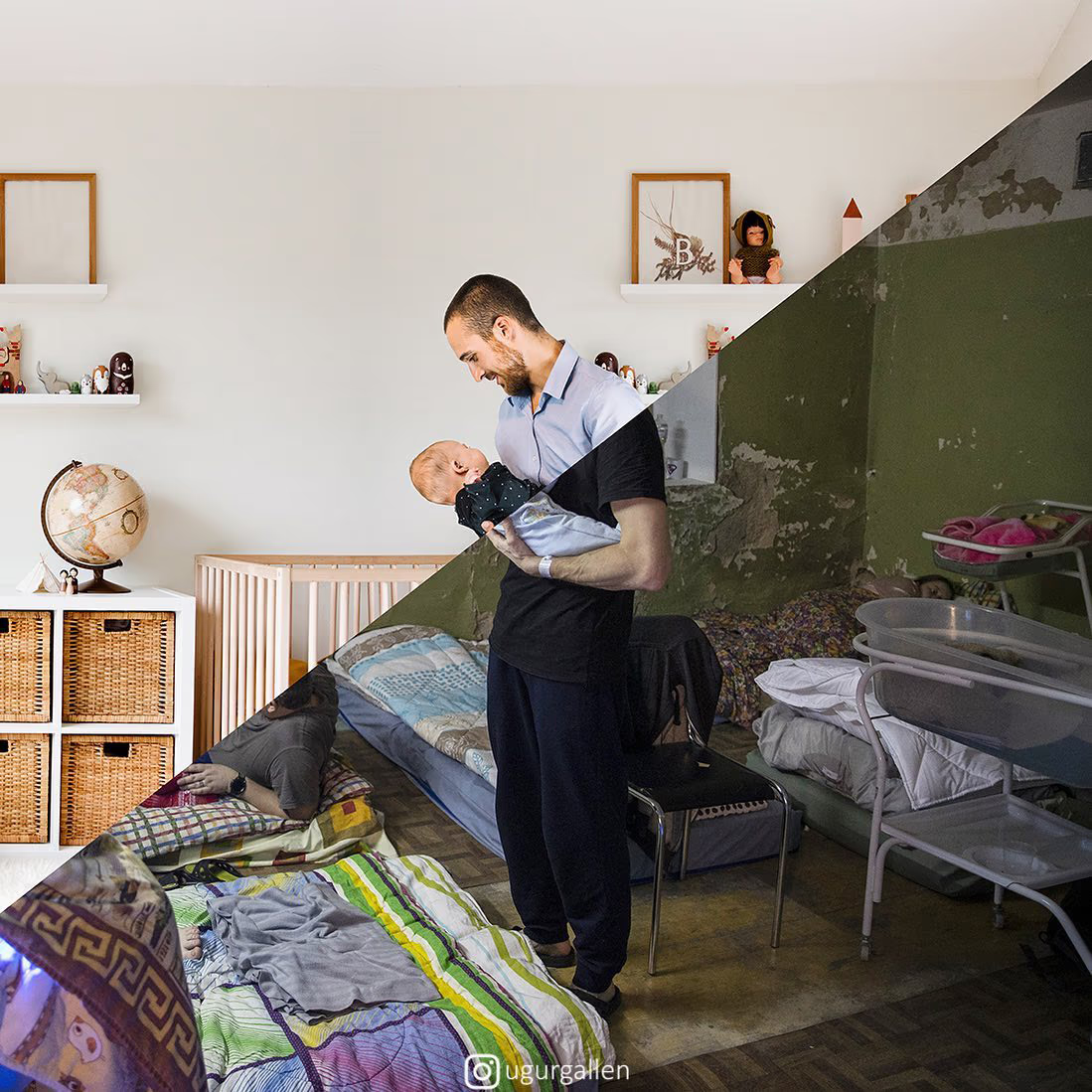In his book Parallel Universes of War and Peace, Turkish artist Ugur Gallenkus reveals the harsh reality through simple photo collages juxtaposing peaceful everyday life with the horrors of war. This series resonates with anyone who reflects on the inequality in a world where some enjoy tranquility and abundance, while others struggle for survival. Gallenkus does not cast blame, but instead offers a profound reflection on the nature of peace and war, reminding us that these contrasts exist simultaneously and in parallel.
Parallel Universes of War and Peace by Ugur Gallenkus is a powerful visual project that comprises a series of collages, with scenes of peaceful life on one side and the horrific consequences of war, violence, and destruction on the other. This contrast is not just striking; it underscores how fragile security can be and highlights the vast inequality among people.
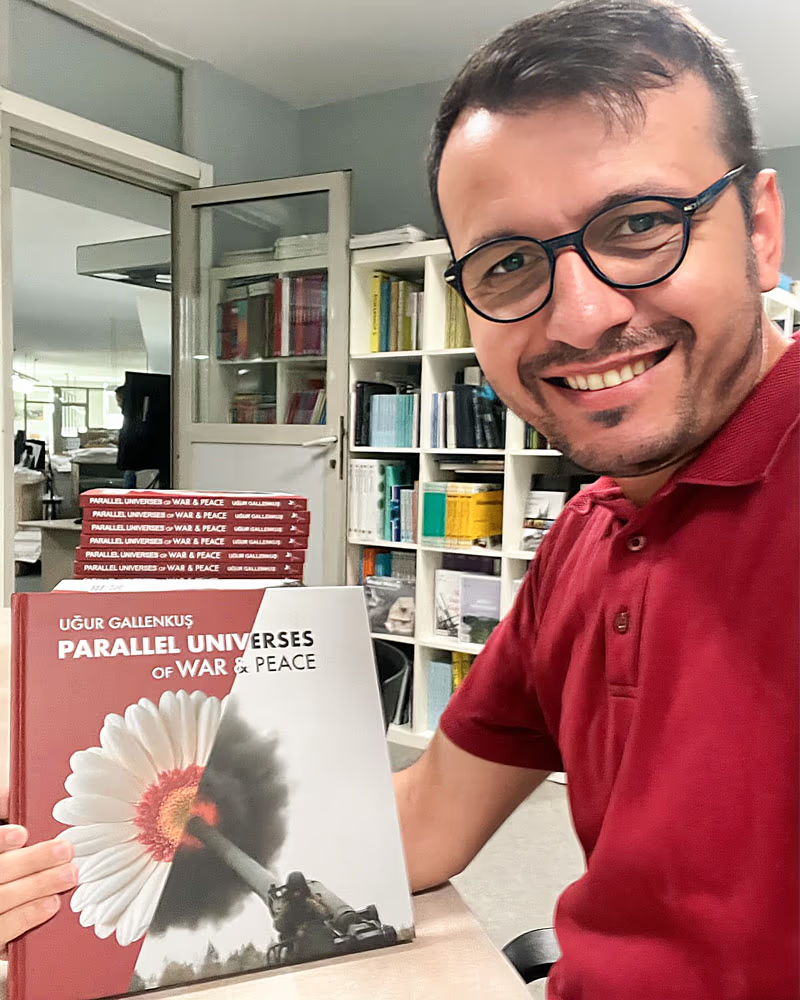
Ugur Gallenkus with the book Parallel Universes of War and Peace.
Each of Gallenkus’s works serves as a bridge between those who live in safety and comfort and those who suffer the consequences of war. In his collages, the merging of realities is achieved through a simple yet remarkably effective technique: one part of the photograph depicts serene scenes, whether it’s family life, a walk in the park, or relaxation on the beach. The other part showcases horrifying images of destroyed cities, wounded children, and soldiers who have endured the hardships of war.
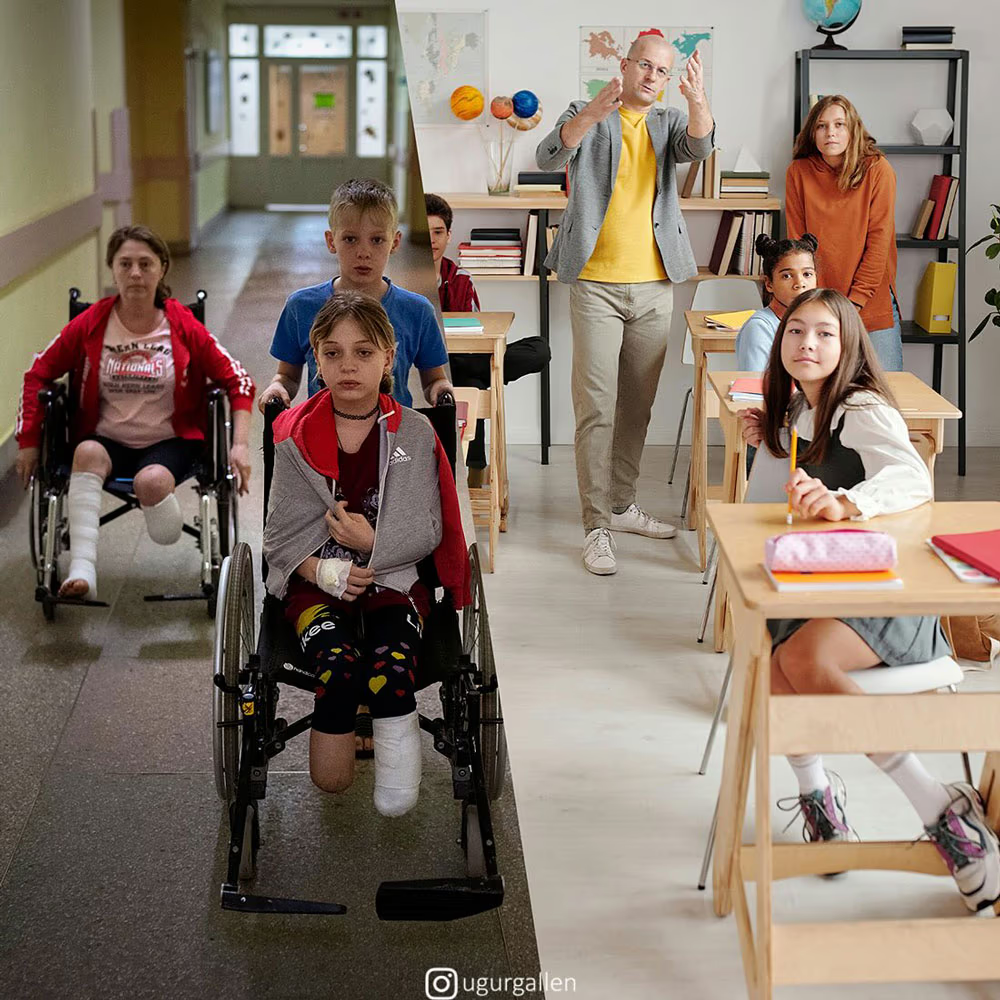
Eleven-year-old Yarik Stepanenko pushes his sister Yana’s wheelchair down the corridor of a state hospital in Ukraine. On April 8, 2022, a Russian missile struck the train station in Kramatorsk, where Yana, Yarik, and their mother, Natasha, had planned to board an evacuation train. Yana lost both of her legs, one just above the ankle and the other above the calf. Their mother, Natasha, lost her left leg below the knee.
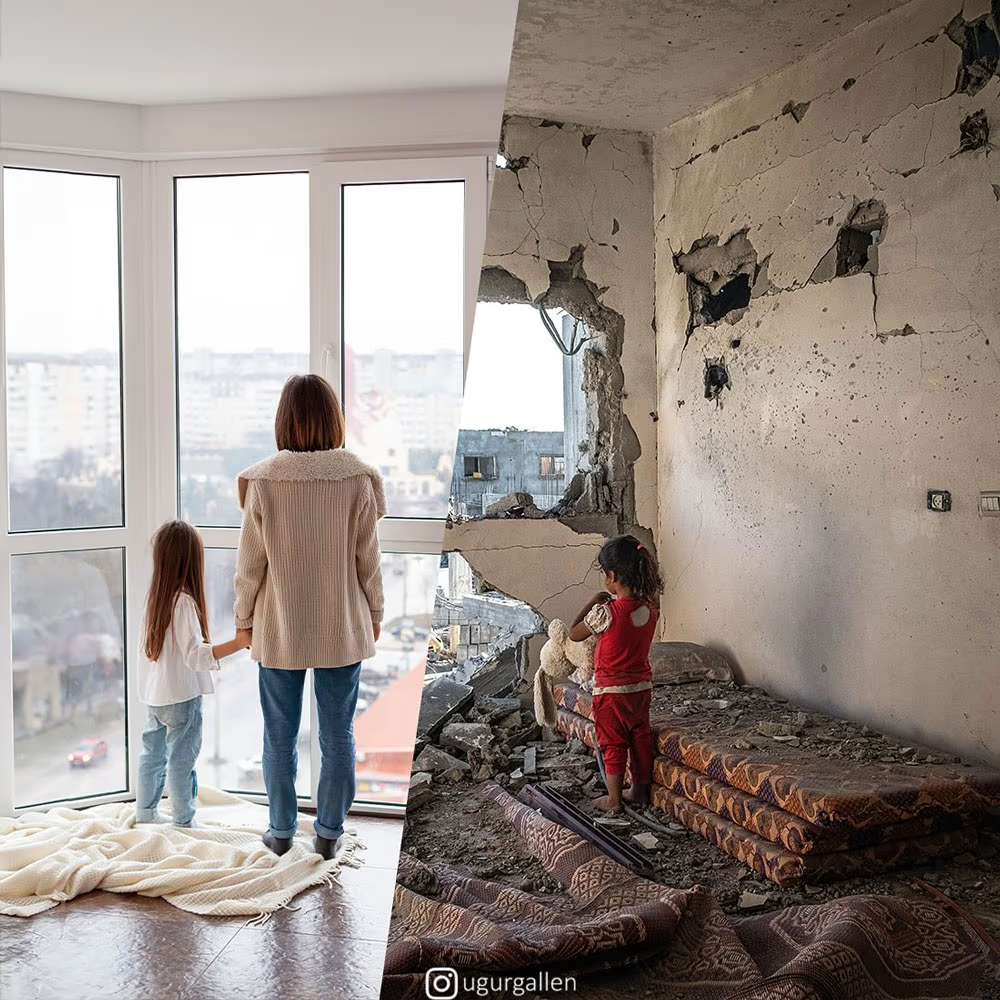
A Palestinian girl stands among the rubble of her destroyed home in Beit Hanoun, Gaza Strip, following an attack by Israel.
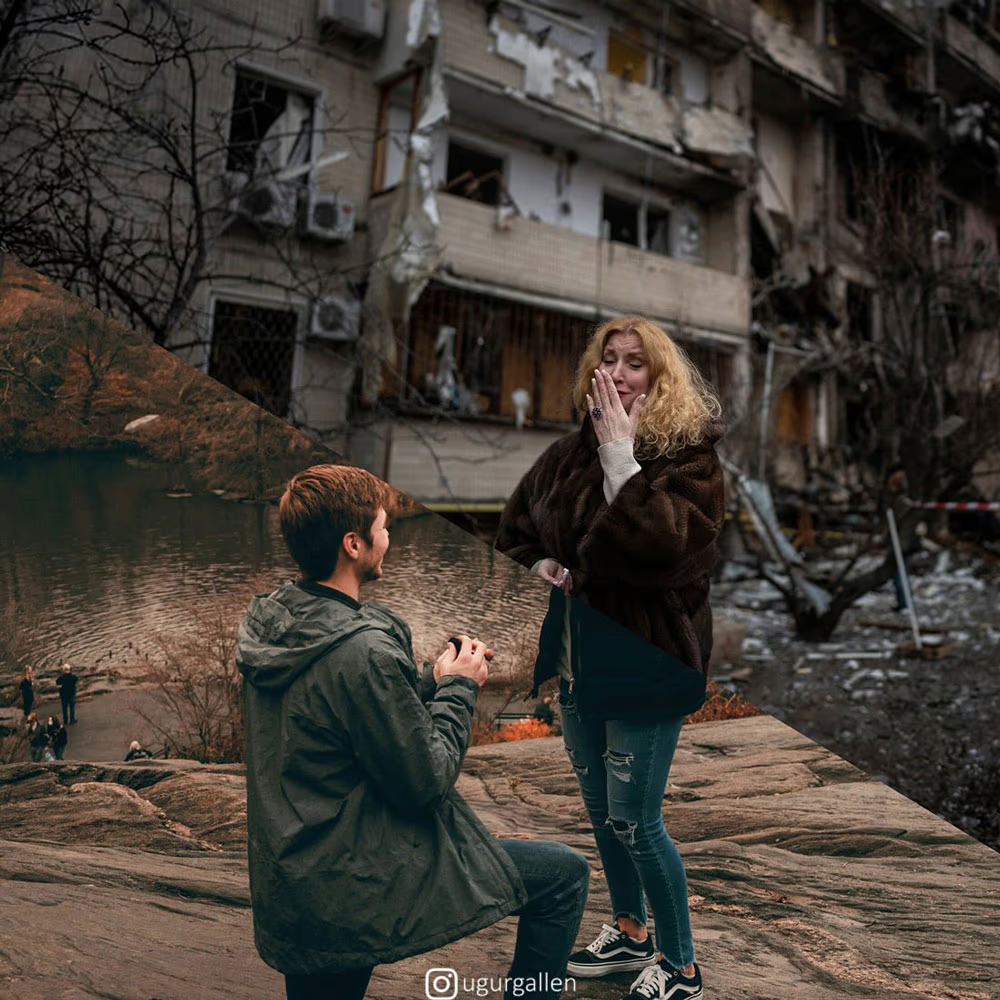
Kyiv resident Natalia stands next to her destroyed apartment building following a Russian missile strike on February 25, 2022.
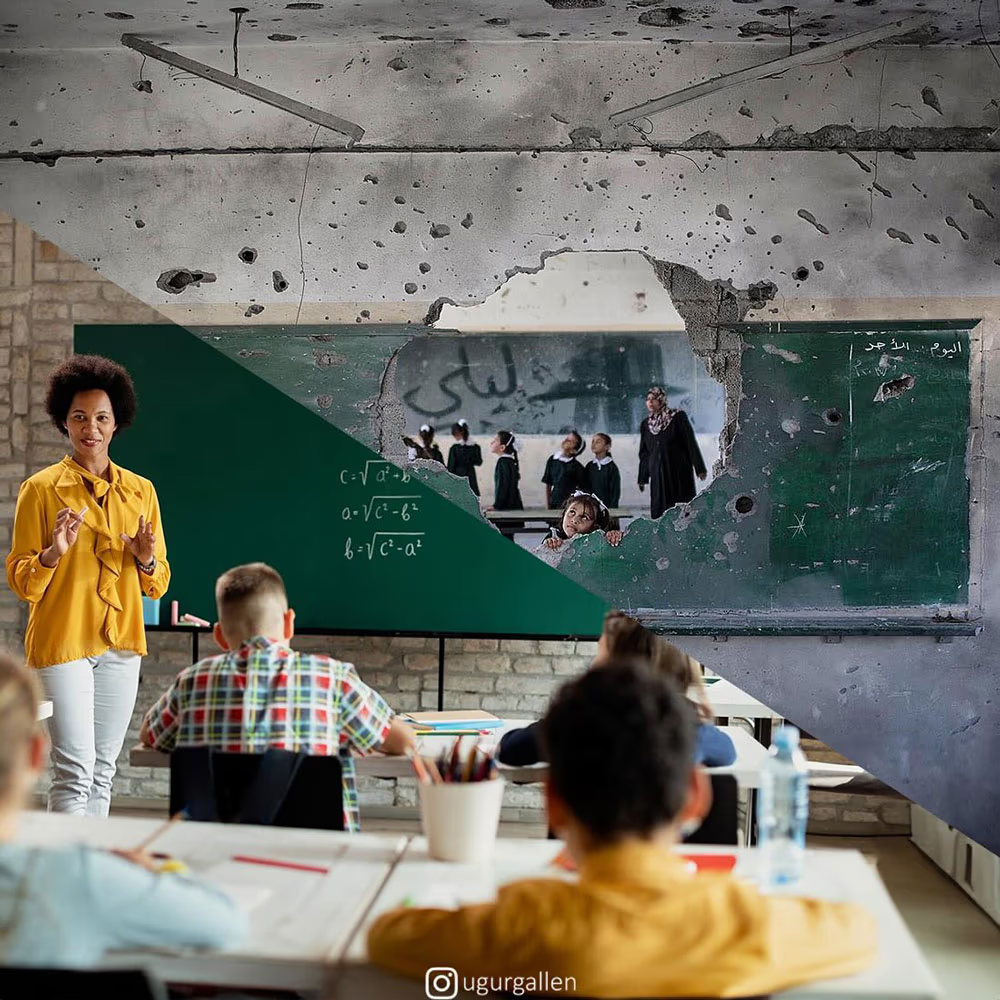
Palestinian students in a partially destroyed classroom on the first day of the school year in the al-Sheikh neighborhood in the eastern Gaza City on September 14, 2014.

Children affected by the Israeli attack in Gaza City on October 23, 2023.
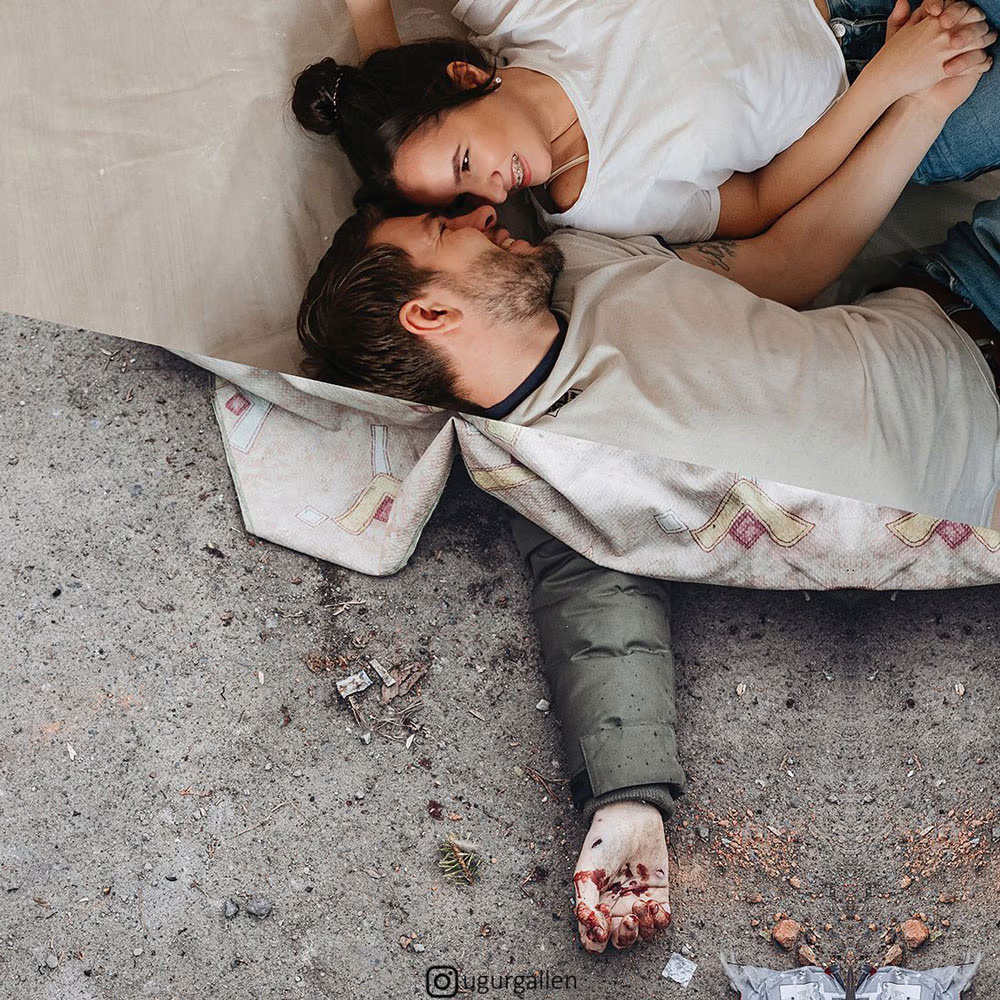
The body of a deceased person, killed as a result of a Russian shelling, lies in the street of Irpin on March 6, 2022.
The uniqueness of Gallenkush’s work lies in the fact that he does not blame those who live in comfort. The artist understands that many people in relative safety are not responsible for what is happening. However, his works remind us that the inequality existing between different parts of the world is too great to be forgotten. Wars, disasters, and human suffering are not distant or foreign issues. Gallenkush’s artworks serve as a mirror for the world, reflecting not only the differences among people but also a call to deepen our awareness of global problems.
In his works, Gallenkus also addresses themes of social inequality, with a particular focus on children who become victims not only of war but also of injustice, poverty, and indifference. In some of his collages, children from wealthy families are depicted in comfortable settings, surrounded by toys and books, while their peers on the other side of the world suffer from hunger or are forced to work from a young age. These images provoke reflection on how unjust life can be for the most vulnerable members of society.
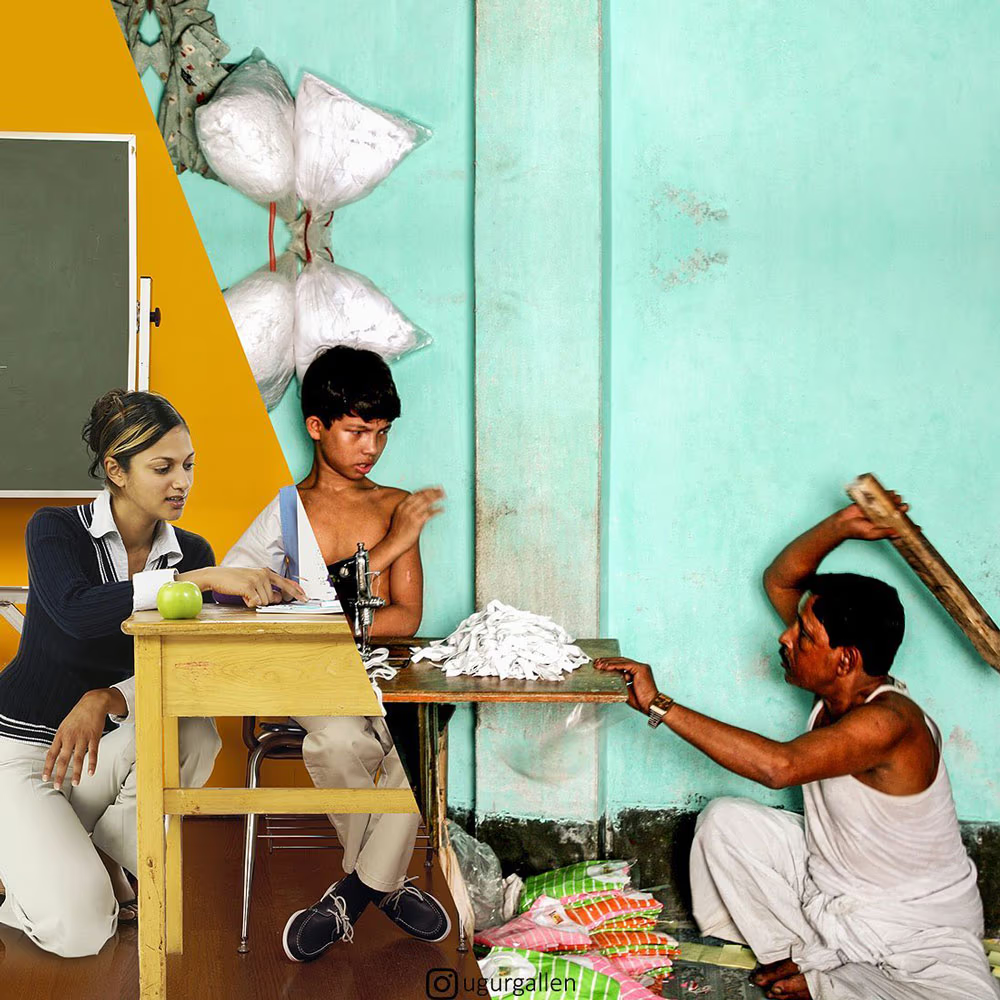
A 12-year-old child from Bangladesh working in a textile factory was beaten by the owner for not completing his work on time.
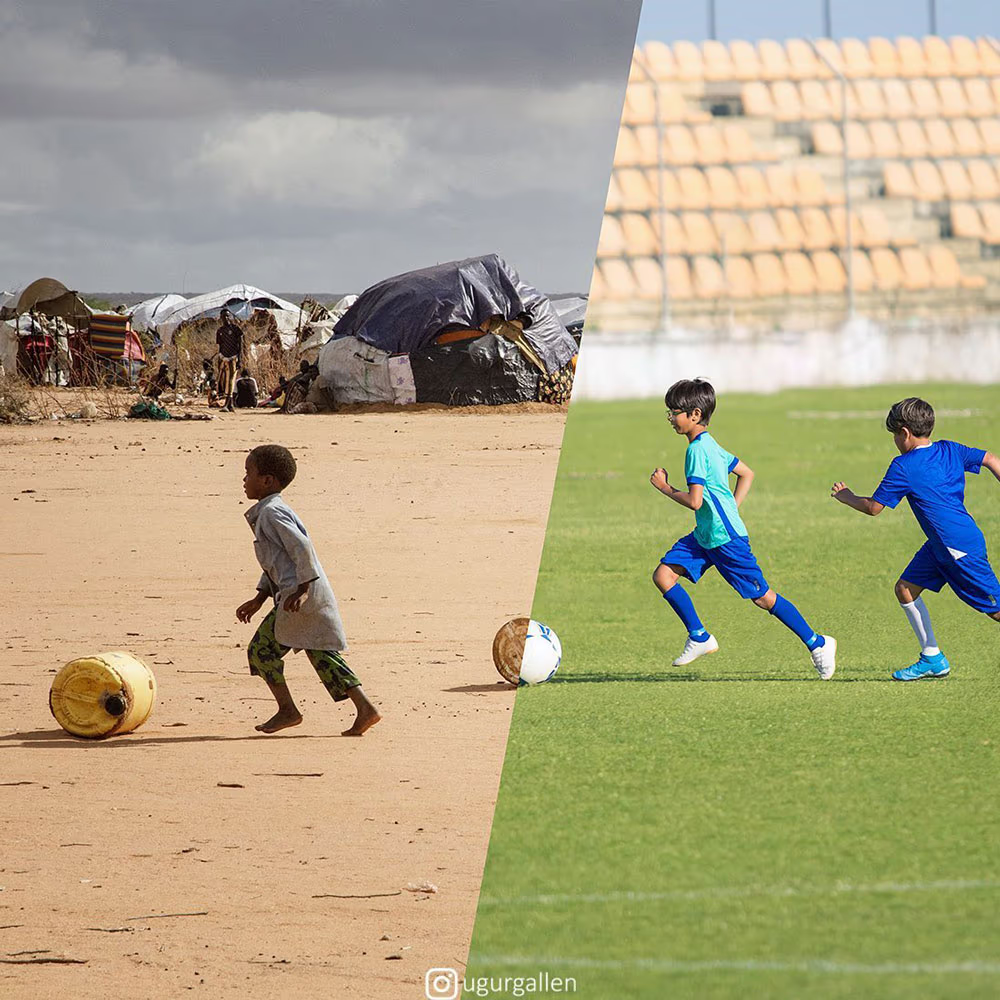
In South Sudan, over 3 million children suffer from malnutrition and catastrophic poverty.

Eleven-year-old Yusuf from Syria works in a textile factory in Turkey. He starts work at 8 AM and finishes at 7 PM, earning about $150 a month.
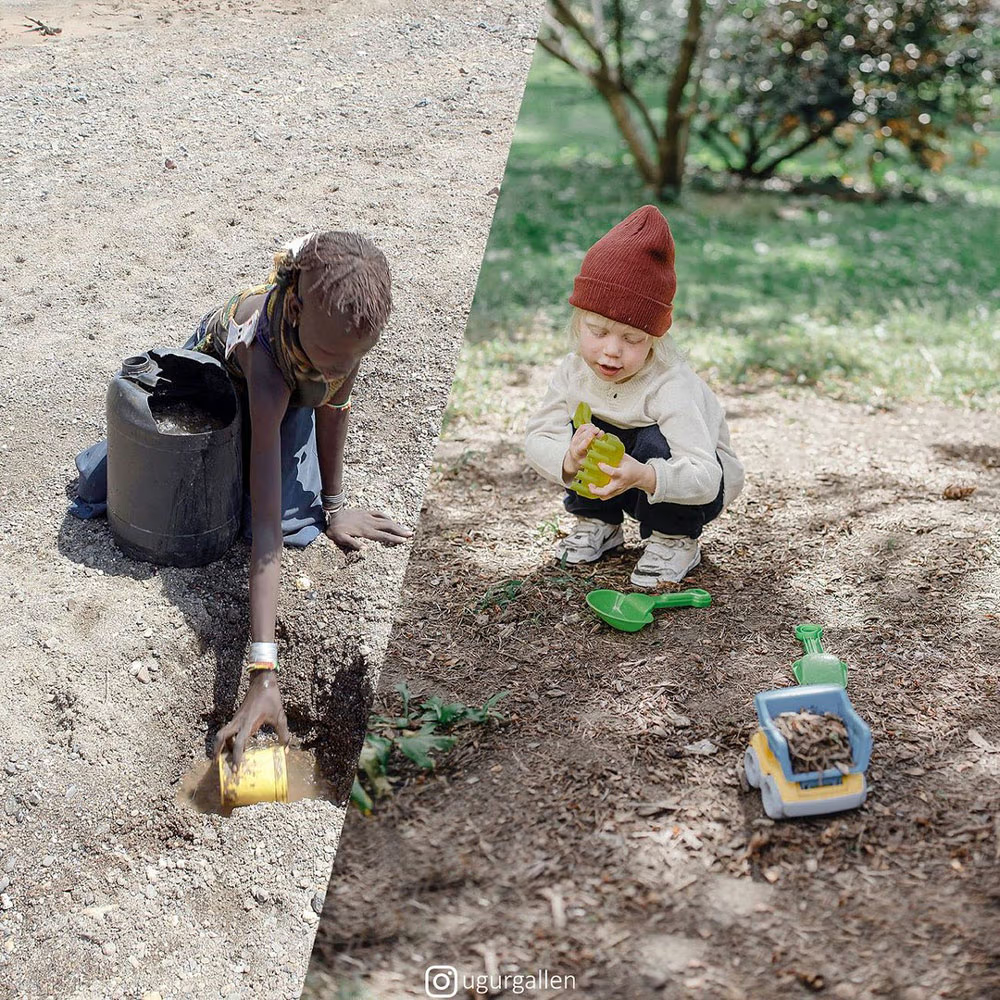
A young girl from the remote Turkana tribe in northern Kenya digs a pit in a riverbed to obtain water. Over 23 million people across East Africa are facing a critical shortage of water and food. The situation is exacerbated by climate change.
Another important theme that Gallenkus frequently illustrates in his collages is the ecological disaster caused by human activity. He juxtaposes scenes of life in clean cities or on beautiful beaches with images of polluted rivers and forests, cleared for industrial growth. These works serve as a warning that human intervention in nature also creates parallel universes—worlds where natural resources are depleted, and the environment deteriorates. Gallenkus emphasizes that ecology is inextricably linked to social and economic inequality, as the poorest regions of the world often bear the brunt of the destructive consequences of climate change and ecological crises.

Around the world, 9 out of 10 people breathe polluted air, leading to 7 million premature deaths each year.
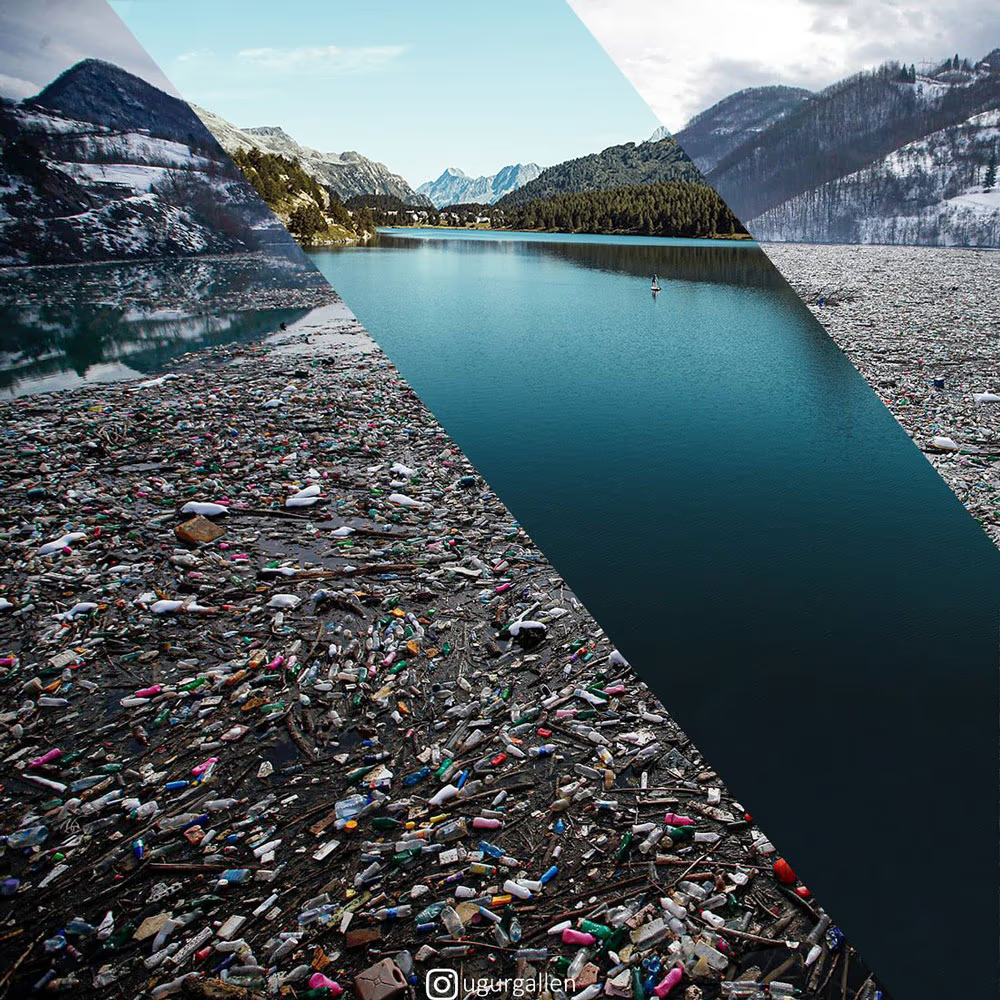
Plastic bottles and other debris float in Lake Potpecko in southwestern Serbia. Serbia and other Balkan countries are virtually drowning in municipal waste after decades of neglect and a lack of effective waste management policies in countries seeking to join the European Union.
Gallenkus also addresses the issue of excessive attention given to celebrities and media figures. His works illustrate how hundreds of cameras and focus are directed at famous personalities, while real problems, such as the suffering and struggles of ordinary people, remain in the shadows. Gallenkus highlights the contrast between the world of bright camera flashes and what lies beyond the frame: the tragedies, pain, and needs that do not generate profit or media interest. This raises an important question about which topics and individuals deserve attention in modern society, and what we, as viewers, are willing to notice versus what we choose to ignore.

A refugee holds her son on Shah Porir Dip Island between Bangladesh and Myanmar. In 2017, over 300,000 people fled from violence in Myanmar, with most attempting to cross the border into Bangladesh. International organizations reported allegations of human rights violations and mass executions carried out by the Myanmar military.
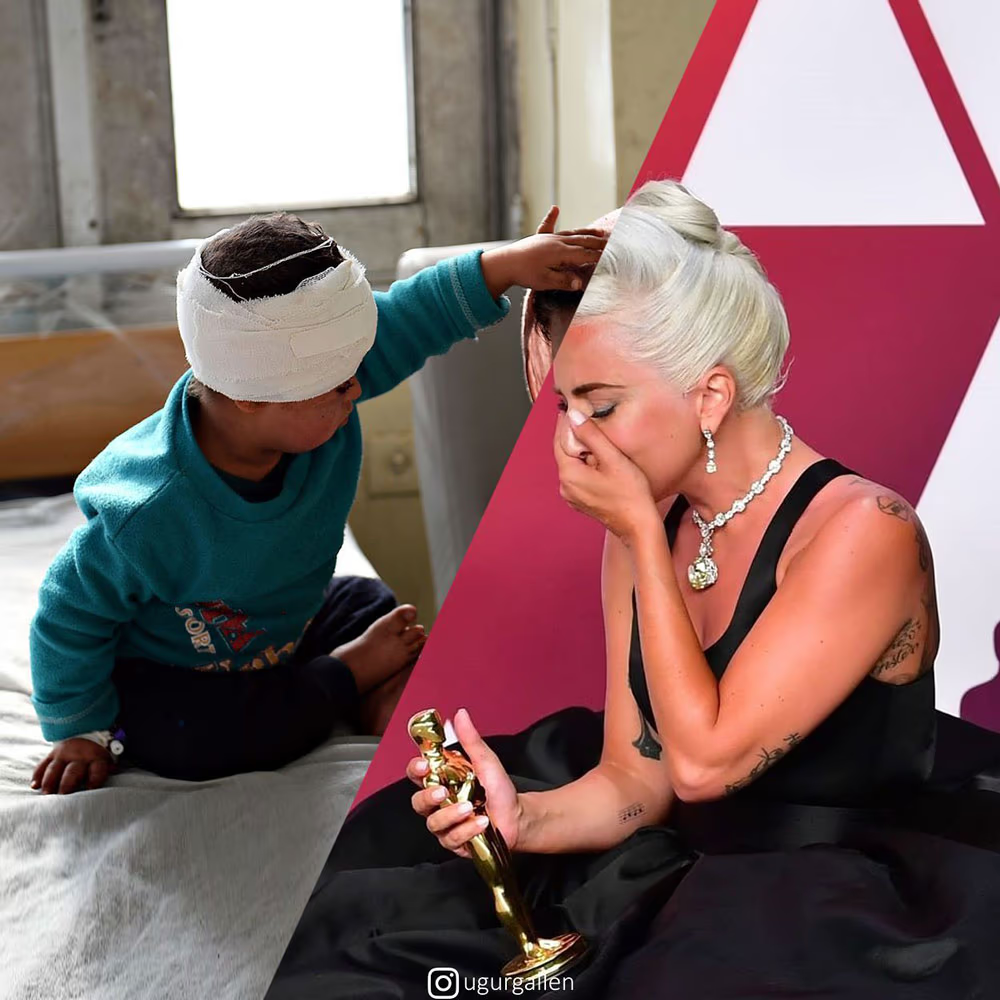
A woman sits beside an injured child in the Indira Gandhi Children’s Hospital following a powerful truck explosion in Kabul.
The book Parallel Universes of War and Peace is more than just an artistic project. It serves as a reminder that everything in this world is interconnected. The well-being of some countries often comes at the expense of the dire situations faced by others. Through his series of collages, Gallenkus highlights this connection, emphasizing the need to reflect on these issues and strive to ensure that global problems do not remain in the shadows.
And while his works do not offer ready-made solutions, they remind us of the need to remember those who are deprived of basic rights to a peaceful life. Gallenkus’s collages open our eyes to this world, urging us not to remain indifferent to the suffering of others and to recognize our privileged position on a global scale.
What is wrong with this world
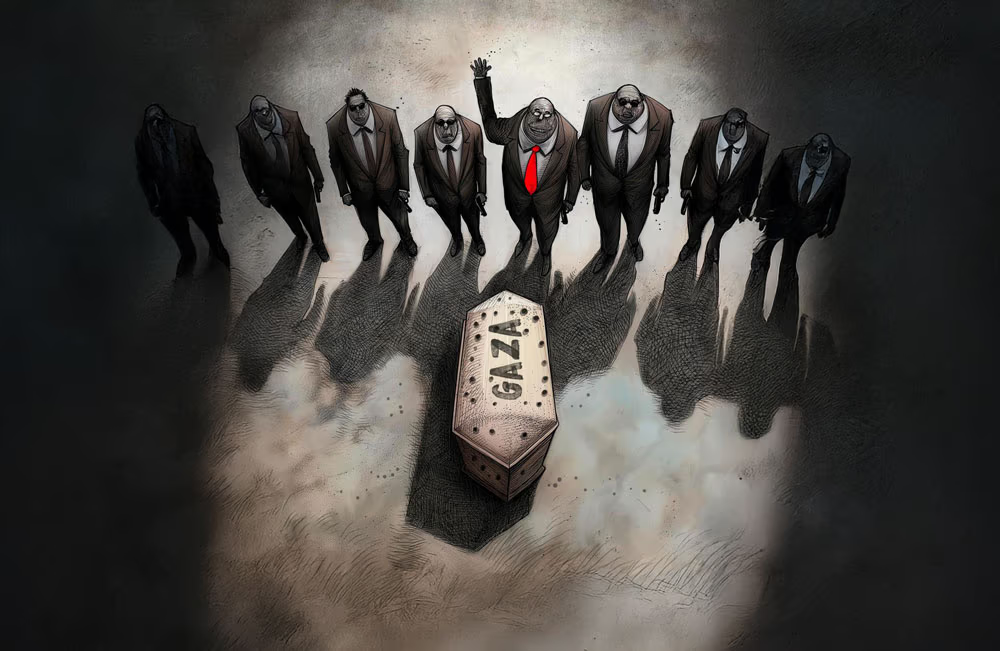
Ceasefire
People Lost Their Lives So Politicians Could Call Themselves Peacemakers

The meaninglessness of endless worrying
The painting Prince of Peace in 1962 raised the question of why the UN is needed

Despots of the 21st century
Artists worldwide portray contemporary usurpers and their interactions

